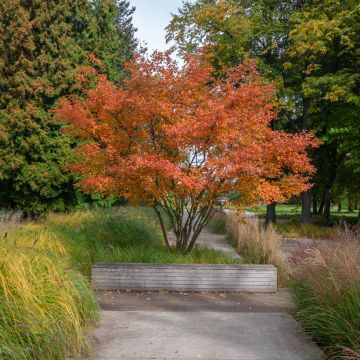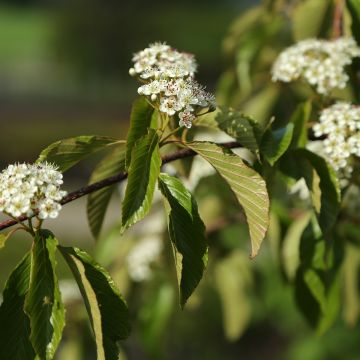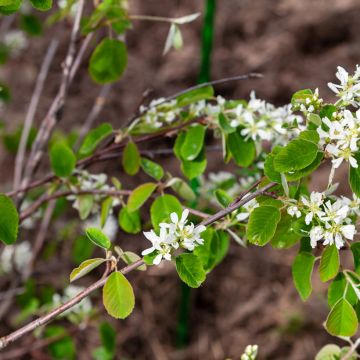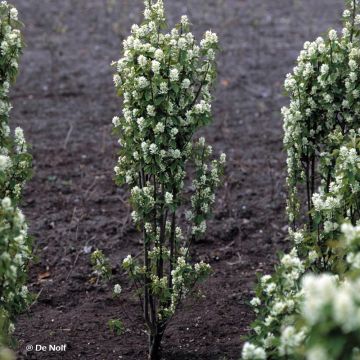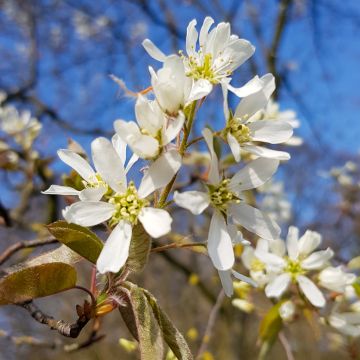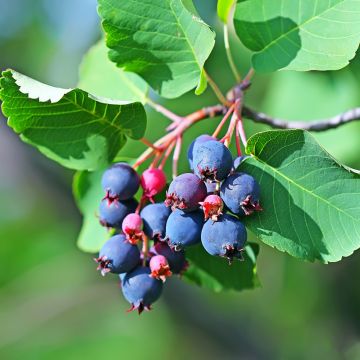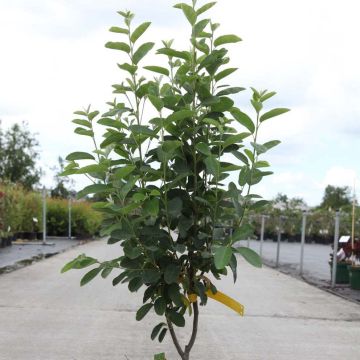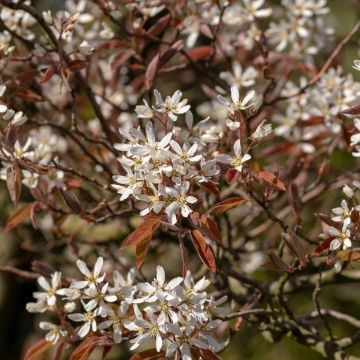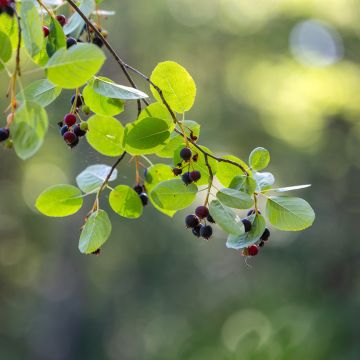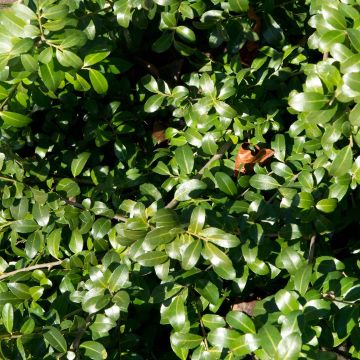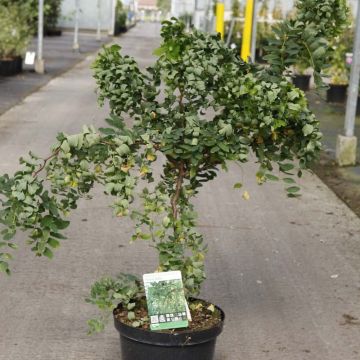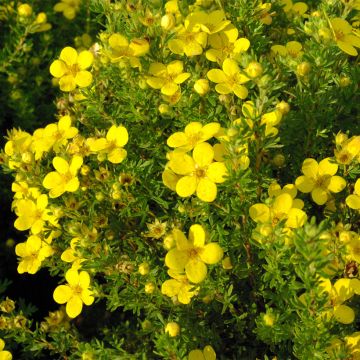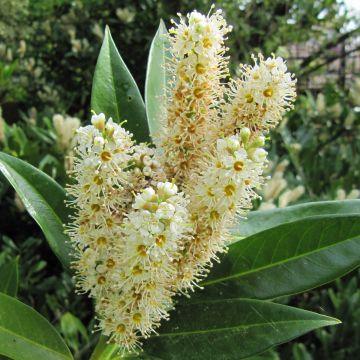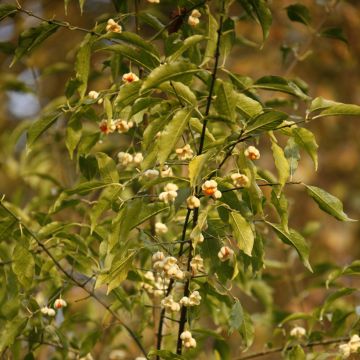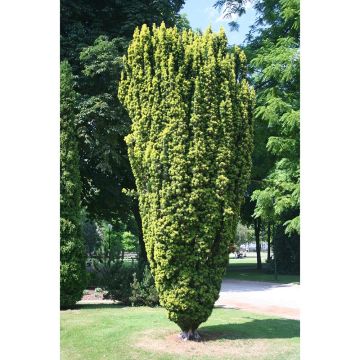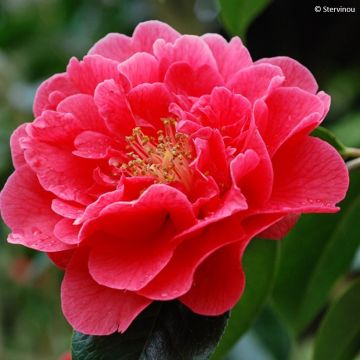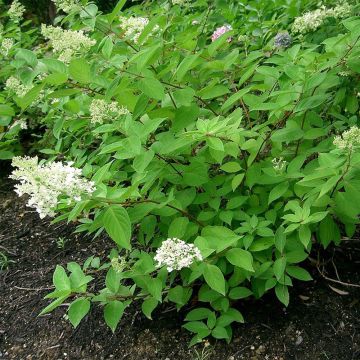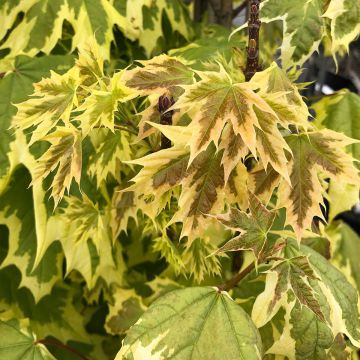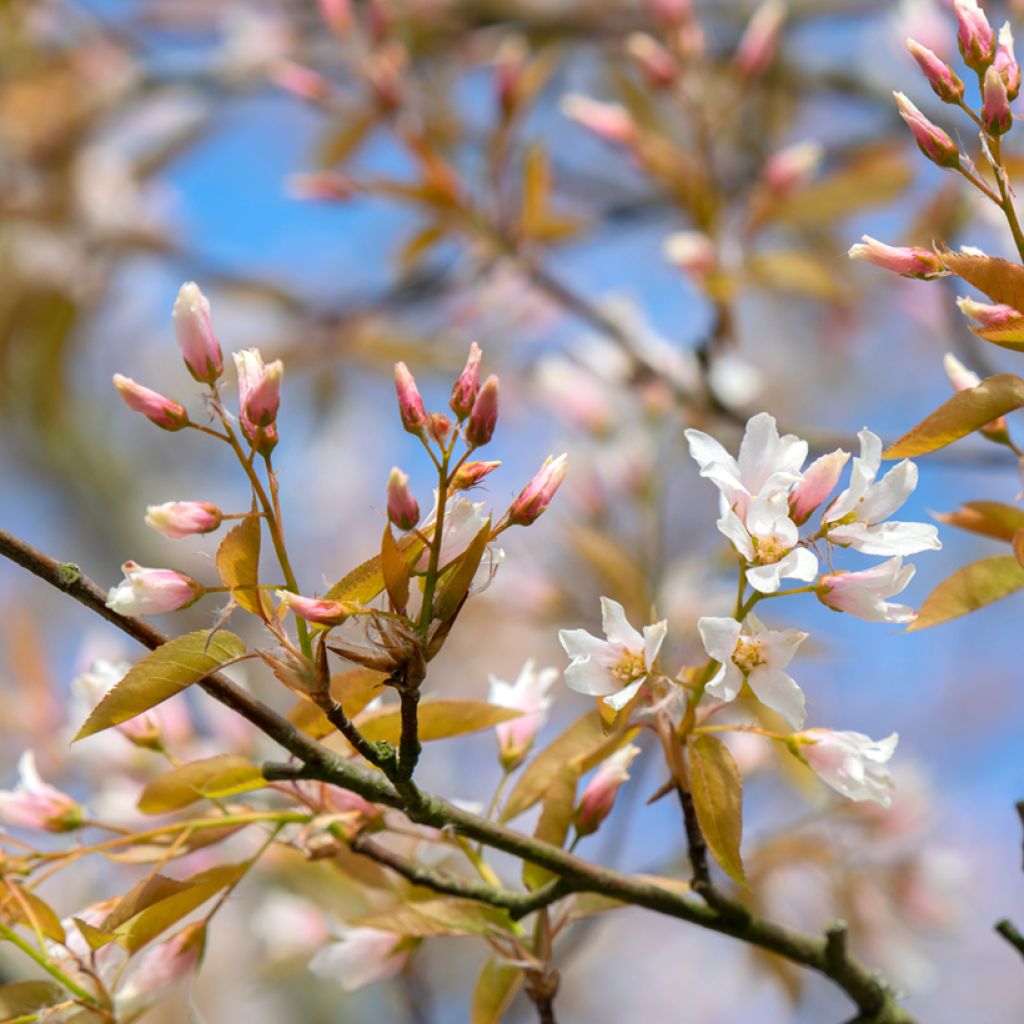

Amelanchier laevis Ballerina
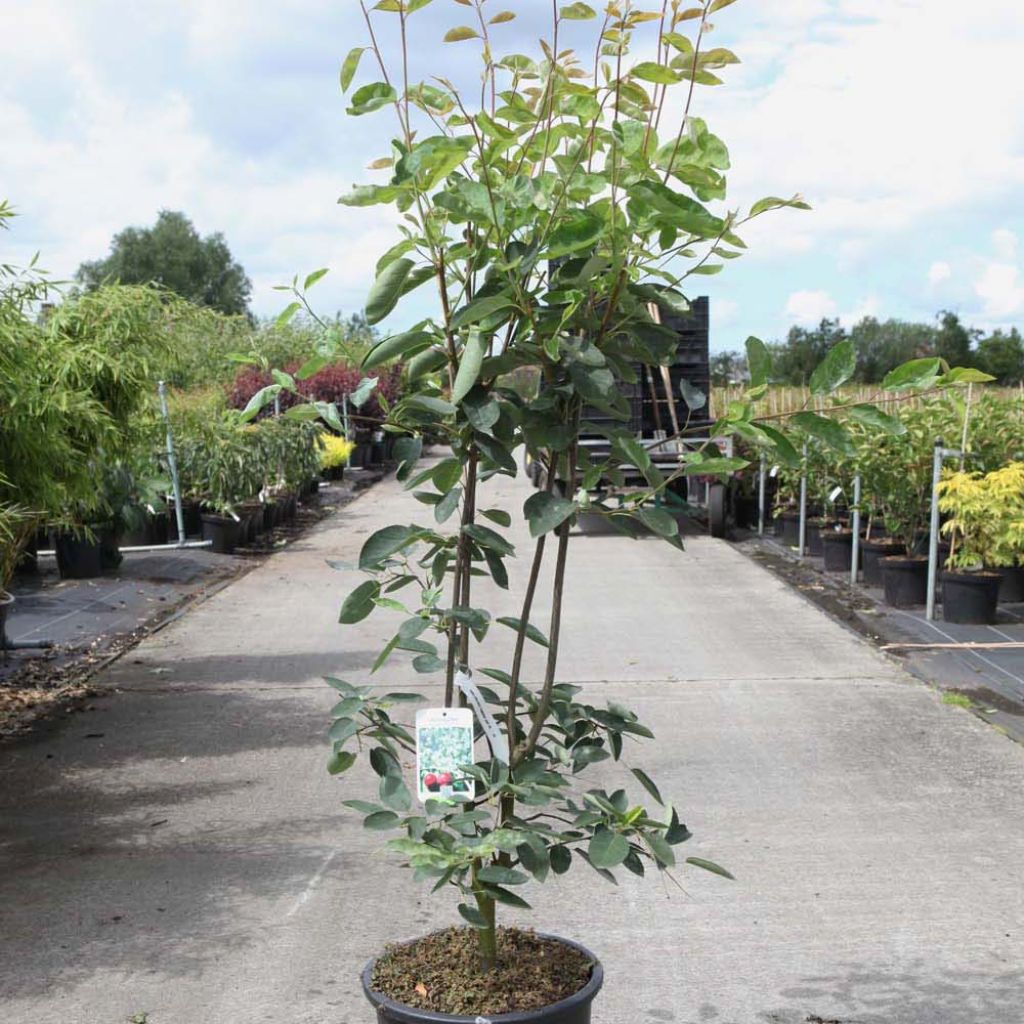

Amelanchier laevis Ballerina
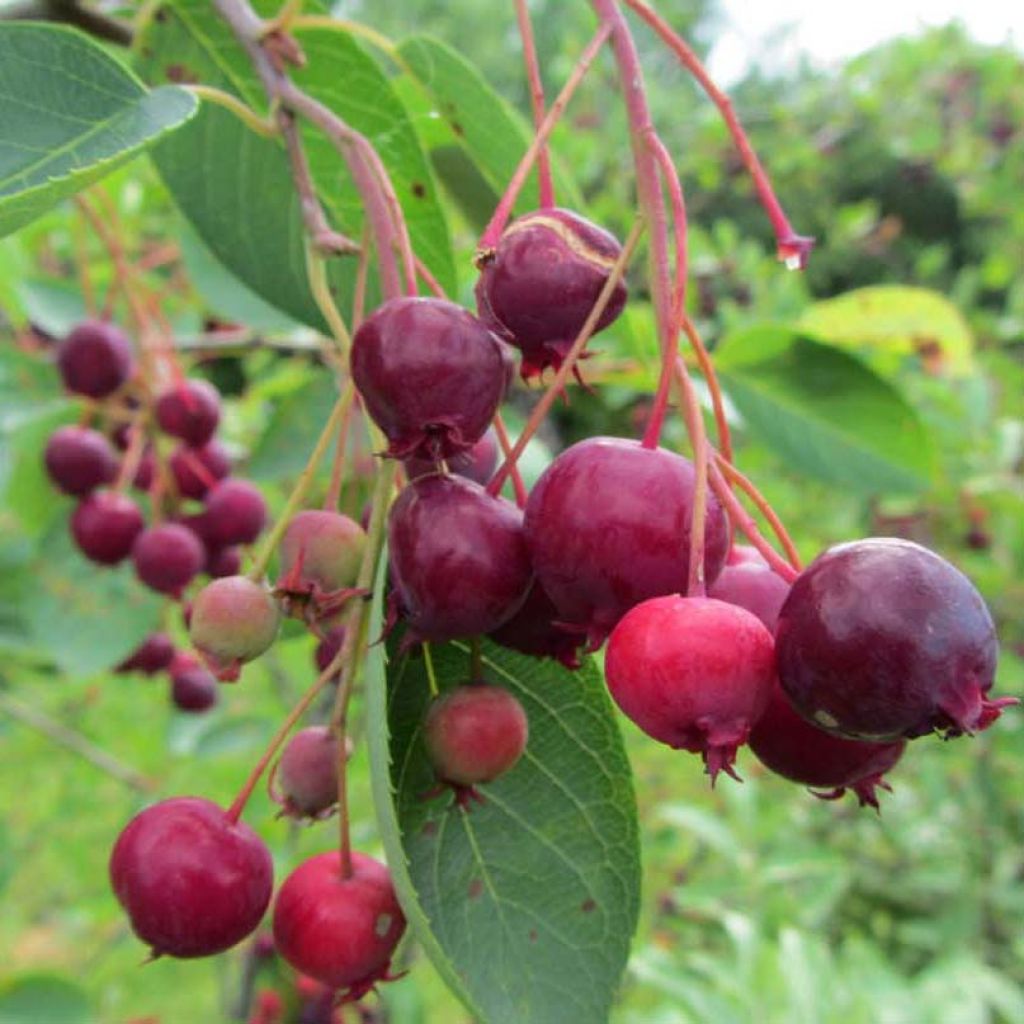

Amelanchier laevis Ballerina
Amelanchier laevis Ballerina
Amelanchier laevis Ballerina
Serviceberry
This item cannot be shipped to the selected country
Delivery charge from €5.90
Delivery charge from €5.90
More information
Schedule delivery date,
and select date in basket
This plant carries a 24 months recovery warranty
More information
We guarantee the quality of our plants for a full growing cycle, and will replace at our expense any plant that fails to recover under normal climatic and planting conditions.
From €5.90 for pickup delivery and €6.90 for home delivery
Express home delivery from €8.90.
From €5.90 for pickup delivery and €6.90 for home delivery
Express home delivery from €8.90.

Does this plant fit my garden?
Set up your Plantfit profile →
Description
Amelanchier laevis 'Ballerina' is a fruitful and ornamental variety of Amelanchier. It is notable for the beauty of its young shoots tinged with bronze, its generous spring flowering with large pure white star-shaped flowers, its edible and delicious fruits of good size, and its vibrant autumn colours. Amelanchiers are easy to grow and very rewarding shrubs or small trees. 'Ballerina' is no exception to the rule, making it an excellent choice for a free hedge, hedgerow, or countryside planting.
Originating from Canada and Eastern North America, Amelanchier laevis and A. lamarckii are robust shrubs from the large Rosaceae family, spared by most parasites and resistant to extreme cold. The cultivar 'Ballerina', obtained in England before 1970, was selected for the quality of its fruits and its floribundity. It has a regular, bushy, and spreading habit. It often forms multiple trunks that support a semi-open crown, with slightly spreading branches. With rather slow growth, the shrub will reach about 5 m (16.4 ft) in height and 3 m (9.8 ft) in width at maturity. The leaves are deciduous, leathery, elliptical, finely toothed at the edges, and pubescent, measuring from 3 cm to 7 cm (1.2 in to 2.8 in) in length. The foliage is medium green with a lighter underside, and when young, it is pubescent and copper-coloured. In autumn, it turns beautiful shades of red, orange, and purple. The flowering is remarkably abundant in April-May, on bare branches or already adorned with young leaves depending on the climate. This Amelanchier quickly flowers and fruits: plants that are 30 cm or 40 cm (11.8 in to 15.7 in) tall are already capable of reproducing. Encased in a pink calyx, the large white flowers with 5 long petals and yellow stamens are gathered in clusters along the branches. They are followed by round edible fruits the size of a blueberry, called pomes. They are initially bright red and then turn black when ripe. With a pleasantly sweet and juicy flavour, they are perfect for making jam.
'Ballerina' is a hardy fruiting shrub that is both undemanding and charming, deserving a place in a countryside, free or fruit hedge. It is also used as a background plant in perennial borders. It pairs well with ornamental apple and cherry trees, deciduous euonymus, Japanese quince, spring-blooming spireas, hawthorns, medlar, plum, and many others.
Report an error about the product description
Amelanchier laevis Ballerina in pictures
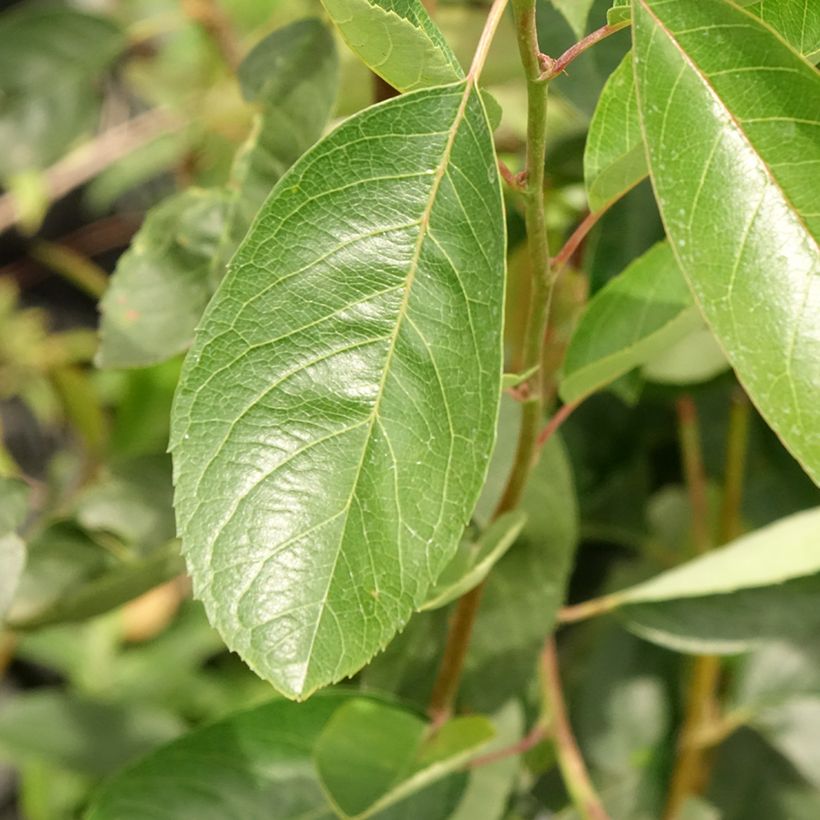

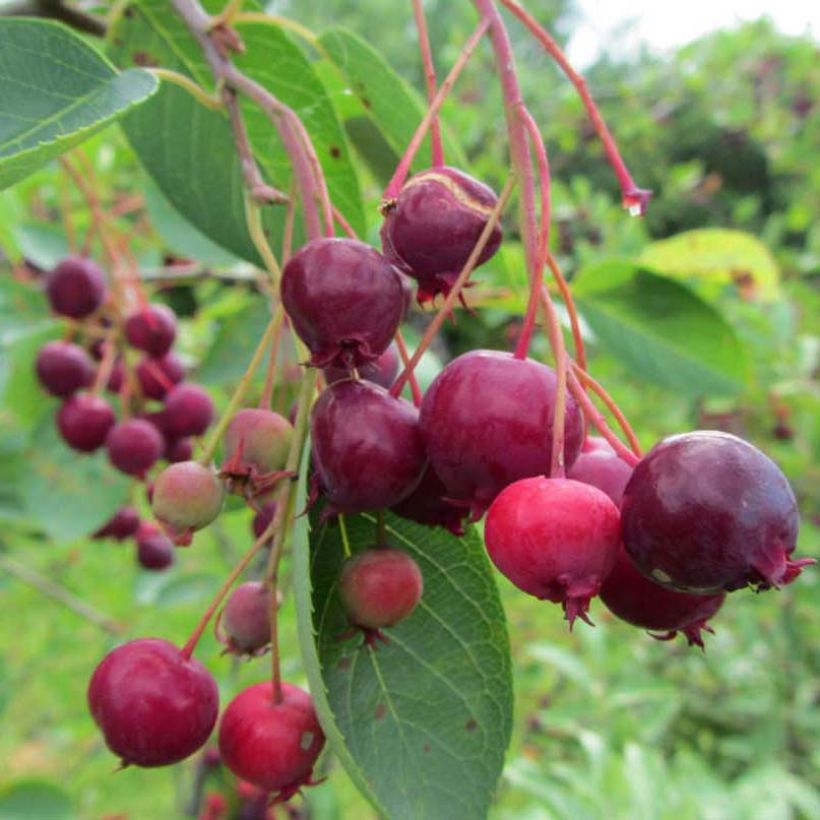

Plant habit
Flowering
Foliage
Botanical data
Amelanchier
laevis
Ballerina
Rosaceae
Serviceberry
Amelanchier lamarckii Ballerina
Cultivar or hybrid
Other Saskatoon - Juneberry
Planting and care
Amelanchier laevis 'Ballerina' should be planted in spring or autumn in any good, well-drained garden soil, slightly dry, fresh or slightly moist, and deep. Position it in a sunny or semi-shaded position. It prefers slightly acidic to neutral soils but tolerates limestone. Water and mulch to maintain soil moisture. This bush does not tolerate heatwaves well and dislikes arid conditions. Prune in February by removing suckers and old stems to aerate and balance the branches. To propagate, you can separate the numerous suckers between late November and early March. Beware of powdery mildew!
Planting period
Intended location
Care
-
, onOrder confirmed
Reply from on Promesse de fleurs
Hedge shrubs
Haven't found what you were looking for?
Hardiness is the lowest winter temperature a plant can endure without suffering serious damage or even dying. However, hardiness is affected by location (a sheltered area, such as a patio), protection (winter cover) and soil type (hardiness is improved by well-drained soil).

Photo Sharing Terms & Conditions
In order to encourage gardeners to interact and share their experiences, Promesse de fleurs offers various media enabling content to be uploaded onto its Site - in particular via the ‘Photo sharing’ module.
The User agrees to refrain from:
- Posting any content that is illegal, prejudicial, insulting, racist, inciteful to hatred, revisionist, contrary to public decency, that infringes on privacy or on the privacy rights of third parties, in particular the publicity rights of persons and goods, intellectual property rights, or the right to privacy.
- Submitting content on behalf of a third party;
- Impersonate the identity of a third party and/or publish any personal information about a third party;
In general, the User undertakes to refrain from any unethical behaviour.
All Content (in particular text, comments, files, images, photos, videos, creative works, etc.), which may be subject to property or intellectual property rights, image or other private rights, shall remain the property of the User, subject to the limited rights granted by the terms of the licence granted by Promesse de fleurs as stated below. Users are at liberty to publish or not to publish such Content on the Site, notably via the ‘Photo Sharing’ facility, and accept that this Content shall be made public and freely accessible, notably on the Internet.
Users further acknowledge, undertake to have ,and guarantee that they hold all necessary rights and permissions to publish such material on the Site, in particular with regard to the legislation in force pertaining to any privacy, property, intellectual property, image, or contractual rights, or rights of any other nature. By publishing such Content on the Site, Users acknowledge accepting full liability as publishers of the Content within the meaning of the law, and grant Promesse de fleurs, free of charge, an inclusive, worldwide licence for the said Content for the entire duration of its publication, including all reproduction, representation, up/downloading, displaying, performing, transmission, and storage rights.
Users also grant permission for their name to be linked to the Content and accept that this link may not always be made available.
By engaging in posting material, Users consent to their Content becoming automatically accessible on the Internet, in particular on other sites and/or blogs and/or web pages of the Promesse de fleurs site, including in particular social pages and the Promesse de fleurs catalogue.
Users may secure the removal of entrusted content free of charge by issuing a simple request via our contact form.
The flowering period indicated on our website applies to countries and regions located in USDA zone 8 (France, the United Kingdom, Ireland, the Netherlands, etc.)
It will vary according to where you live:
- In zones 9 to 10 (Italy, Spain, Greece, etc.), flowering will occur about 2 to 4 weeks earlier.
- In zones 6 to 7 (Germany, Poland, Slovenia, and lower mountainous regions), flowering will be delayed by 2 to 3 weeks.
- In zone 5 (Central Europe, Scandinavia), blooming will be delayed by 3 to 5 weeks.
In temperate climates, pruning of spring-flowering shrubs (forsythia, spireas, etc.) should be done just after flowering.
Pruning of summer-flowering shrubs (Indian Lilac, Perovskia, etc.) can be done in winter or spring.
In cold regions as well as with frost-sensitive plants, avoid pruning too early when severe frosts may still occur.
The planting period indicated on our website applies to countries and regions located in USDA zone 8 (France, United Kingdom, Ireland, Netherlands).
It will vary according to where you live:
- In Mediterranean zones (Marseille, Madrid, Milan, etc.), autumn and winter are the best planting periods.
- In continental zones (Strasbourg, Munich, Vienna, etc.), delay planting by 2 to 3 weeks in spring and bring it forward by 2 to 4 weeks in autumn.
- In mountainous regions (the Alps, Pyrenees, Carpathians, etc.), it is best to plant in late spring (May-June) or late summer (August-September).
The harvesting period indicated on our website applies to countries and regions in USDA zone 8 (France, England, Ireland, the Netherlands).
In colder areas (Scandinavia, Poland, Austria...) fruit and vegetable harvests are likely to be delayed by 3-4 weeks.
In warmer areas (Italy, Spain, Greece, etc.), harvesting will probably take place earlier, depending on weather conditions.
The sowing periods indicated on our website apply to countries and regions within USDA Zone 8 (France, UK, Ireland, Netherlands).
In colder areas (Scandinavia, Poland, Austria...), delay any outdoor sowing by 3-4 weeks, or sow under glass.
In warmer climes (Italy, Spain, Greece, etc.), bring outdoor sowing forward by a few weeks.

































